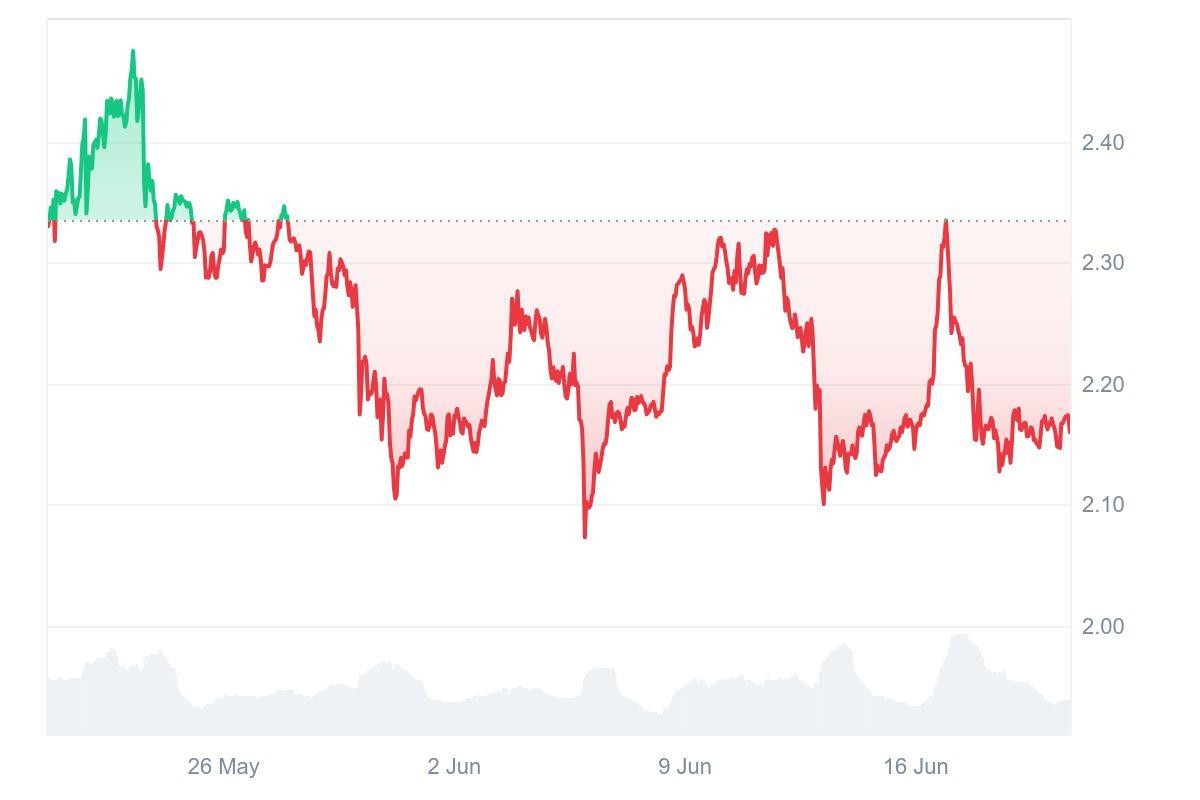Best Crypto to Stack This Summer: Why Analysts Say This Audited AI Token Beats Ripple (XRP) for Safety and Gains
Ripple (XRP) has long maintained its position in the cryptocurrency marketplace as a favorite for those seeking safer investments with moderate growth. However, Ruvi AI (RUVI), a disruptive new project that merges blockchain technology with artificial intelligence (AI), is quickly emerging as a smarter and more lucrative alternative. With over $1.9 million raised, more than 160 million tokens sold, and projections of a 66x ROI, Ruvi AI’s presale success is turning heads, positioning it as a must-have crypto this summer.
Why Analysts Prefer Ruvi AI Over Ripple
Ripple’s appeal lies in its use case as a payment protocol for faster and cheaper transactions. While Ripple has found favor with financial institutions, its scope remains narrowly focused. Ruvi AI, in contrast, brings versatility and innovation to a wide range of industries, offering practical applications in marketing, entertainment, and finance. These real-world use cases anchor Ruvi AI’s token with demand that extends well beyond speculative trading.
What truly sets Ruvi AI apart is its structured growth model. During Phase 2 of its presale, the token price is set at a mere $0.015, making it highly accessible for early investors. Once the presale concludes, the token price will increase to $0.07, delivering an almost 5x ROI before the token even hits exchanges. Analysts are predicting further growth to $1 post-listing, translating to a remarkable 66x ROI for presale participants, a level of profitability that Ripple has struggled to achieve in recent cycles.
Presale Success Paves the Way
Ruvi AI’s presale results have been outstanding, showcasing the growing confidence in its roadmap and market potential. The project has already:
- Raised over $1.9 million
- Attracted more than 1,600 holders
- Sold over 160 million tokens
One unique aspect of Ruvi AI’s presale is the guaranteed $0.07 per token valuation after Phase 2, offering predictability and reducing speculation-based risks. This transparent pricing model has further cemented Ruvi AI’s reputation as a secure and investor-friendly project.
VIP Investment Tiers for Maximum Gains
Ruvi AI goes a step further by offering VIP investment tiers, which provide generous bonus allocations for higher contributions. These tiers are designed to amplify earnings for early adopters:
- VIP Tier 2 ($750 investment, 40% bonus):
- Total tokens received: 70,000 (50,000 base + 20,000 bonus).
- Value at $0.07 per token: $4,900.
- Value at $1 per token: $70,000.
- VIP Tier 3 ($2,100 investment, 60% bonus):
- Total tokens received: 224,000 (140,000 base + 84,000 bonus).
- Value at $0.07 per token: $15,680.
- Value at $1 per token: $224,000.
- VIP Tier 5 ($9,600 investment, 100% bonus):
- Total tokens received: 1,280,000 (double the allocation).
- Value at $0.07 per token: $89,600.
- Value at $1 per token: $1,280,000.
These bonus-laden tiers make Ruvi AI one of the most rewarding presales in the crypto ecosystem.
Transparency and Security
One of Ruvi AI’s standout features is its dedication to transparency and security, offering investors peace of mind in an often-volatile space. The project is undergoing a third-party audit by CyberScope, a highly regarded blockchain auditing firm that ensures Ruvi AI’s platform meets rigorous safety standards.
Additionally, Ruvi AI has partnered with WEEX Exchange, ensuring immediate post-presale liquidity. This collaboration allows holders to seamlessly trade when the token becomes listed, further elevating the overall investor experience.
Pragmatic Applications with Real-World Impact
Unlike Ripple, whose primary focus relies heavily on payments, Ruvi AI brings diverse solutions to multiple sectors:
- Marketing: Businesses leverage Ruvi AI’s AI technology to optimize ad campaigns, streamline targeting, and maximize ROI.
- Entertainment: Blockchain-backed payment systems and AI personalization empower content creators to enhance audience engagement and monetize efficiently.
- Finance: Tools for fraud detection, scalability, and transparency modernize financial systems, offering unparalleled benefits to institutions.
These wide-ranging applications secure Ruvi AI’s long-term relevance in both existing and emerging markets.
Why Ruvi AI Is This Summer’s Top Crypto
Ripple has played a significant role in the cryptocurrency market, but Ruvi AI’s combination of utility, high growth potential, and commitment to transparency makes it a better choice for investors seeking exponential returns.
Its $0.015 presale price, guaranteed $0.07 post-presale valuation, and projected $1 listing price make Ruvi AI an investment opportunity that’s hard to ignore, with 66x ROI potential dwarfing Ripple’s more modest gains. Having raised over $1.9 million, sold over 160 million tokens, and formed key partnerships with CyberScope and WEEX Exchange, Ruvi AI is well-positioned for success in 2025 and beyond.
Learn More
Buy RUVI: https://presale.ruvi.io
Website: https://ruvi.io
Whitepaper: https://docs.ruvi.io
Telegram: https://t.me/ruviofficial
Twitter/X: https://x.com/RuviAI
Try RUVI AI: https://web.ruvi.io/register






